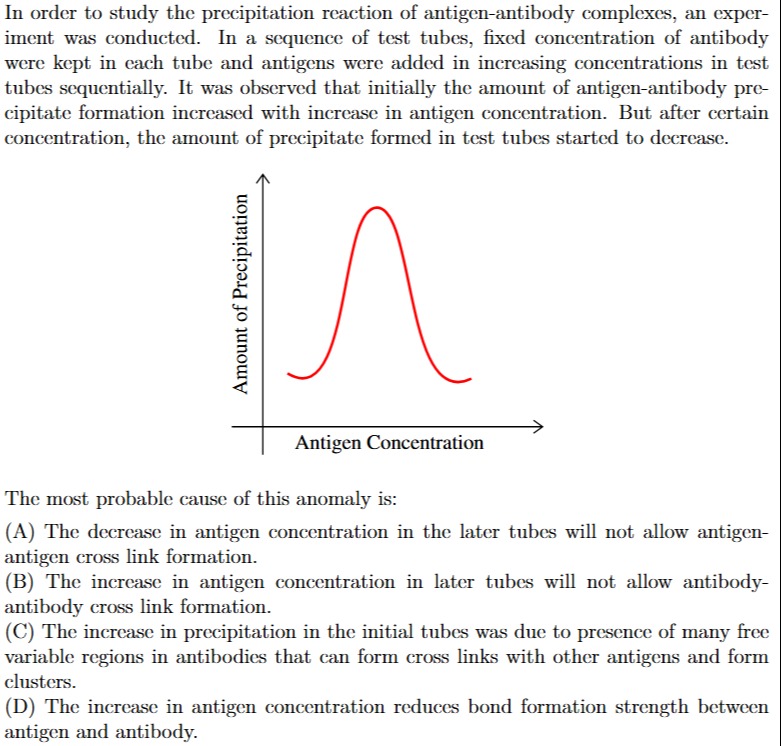Question
Question: In order to study the precipitation reaction of antigen-antibody complexes, an experiment was conduc...
In order to study the precipitation reaction of antigen-antibody complexes, an experiment was conducted. In a sequence of test tubes, fixed concentration of antibody were kept in each tube and antigens were added in increasing concentrations in test tubes sequentially. It was observed that initially the amount of antigen-antibody precipitate formation increased with increase in antigen concentration. But after certain concentration, the amount of precipitate formed in test tubes started to decrease.

The decrease in antigen concentration in the later tubes will not allow antigen-antigen cross link formation.
The increase in antigen concentration in later tubes will not allow antibody-antibody cross link formation.
The increase in precipitation in the initial tubes was due to presence of many free variable regions in antibodies that can form cross links with other antigens and form clusters.
The increase in antigen concentration reduces bond formation strength between antigen and antibody.
The increase in antigen concentration in later tubes prevents the formation of large, insoluble antigen-antibody lattices due to saturation of antibody binding sites.
Solution
The experiment illustrates a classic antigen-antibody precipitation curve with three zones:
-
Prozone (Antibody Excess): Low precipitation due to insufficient antigen to form large lattices.
-
Zone of Equivalence (Optimal Proportion): Maximum precipitation occurs with optimal antigen-antibody ratio, facilitating extensive cross-linking.
-
Postzone (Antigen Excess): Precipitation decreases because excess antigen saturates antibody binding sites, forming small, soluble complexes instead of large lattices.
Option B accurately describes the postzone phenomenon, where high antigen concentration inhibits the formation of large, insoluble antigen-antibody lattices, leading to decreased precipitation.
